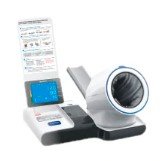Regulatory Changes in Food Safety Testing Impacting Phlebotomy Labs in the United States
Summary
- Regulatory changes in food safety testing affect phlebotomy labs in the United States
- There are key Regulations that all medical labs must adhere to in order to maintain compliance
- It is important for phlebotomy labs to stay up-to-date on regulatory changes to ensure the accuracy of Test Results and the safety of patients
Introduction
Medical labs play a crucial role in healthcare by providing accurate and timely Test Results to help diagnose and treat patients. Phlebotomy labs, in particular, are responsible for collecting blood samples from patients for testing. With the rise in food safety concerns, regulatory changes impacting food safety testing have also affected phlebotomy labs in the United States. In this article, we will explore the regulatory changes that impact food safety testing in phlebotomy labs and the importance of staying compliant with these Regulations.
Regulatory Changes in Food Safety Testing
Food and Drug Administration (FDA) Regulations
The FDA plays a key role in regulating food safety testing in medical labs, including phlebotomy labs. They set standards for testing methods and equipment to ensure the accuracy and reliability of Test Results. Some key FDA Regulations that impact food safety testing in phlebotomy labs include:
- Good Laboratory Practices (GLP) - These Regulations outline the requirements for conducting laboratory studies that support regulatory submissions for food safety testing.
- Clinical Laboratory Improvement Amendments (CLIA) - CLIA Regulations establish Quality Standards for all laboratory testing to ensure the accuracy, reliability, and timeliness of patient Test Results.
Centers for Disease Control and Prevention (CDC) Guidelines
The CDC provides guidelines for food safety testing in medical labs to help prevent the spread of foodborne illnesses. Phlebotomy labs must follow these guidelines to ensure the safety of patients and healthcare workers. Some key CDC guidelines include:
- Proper handling and storage of food samples to prevent contamination
- Use of personal protective equipment (PPE) when handling food samples
Importance of Compliance
Staying compliant with regulatory changes in food safety testing is crucial for phlebotomy labs to ensure the accuracy of Test Results and the safety of patients. Non-compliance with Regulations can lead to inaccurate Test Results, which can impact patient care and treatment decisions. It can also lead to fines and penalties for the lab, damaging its reputation and potentially putting patients at risk. Therefore, it is essential for phlebotomy labs to stay up-to-date on regulatory changes and take proactive steps to maintain compliance.
Conclusion
Regulatory changes in food safety testing have a direct impact on phlebotomy labs in the United States. It is important for these labs to stay informed about key Regulations set by the FDA and CDC to ensure the accuracy of Test Results and the safety of patients. By staying compliant with regulatory changes, phlebotomy labs can provide high-quality testing services that contribute to better patient outcomes and overall healthcare quality.

Disclaimer: The content provided on this blog is for informational purposes only, reflecting the personal opinions and insights of the author(s) on the topics. The information provided should not be used for diagnosing or treating a health problem or disease, and those seeking personal medical advice should consult with a licensed physician. Always seek the advice of your doctor or other qualified health provider regarding a medical condition. Never disregard professional medical advice or delay in seeking it because of something you have read on this website. If you think you may have a medical emergency, call 911 or go to the nearest emergency room immediately. No physician-patient relationship is created by this web site or its use. No contributors to this web site make any representations, express or implied, with respect to the information provided herein or to its use. While we strive to share accurate and up-to-date information, we cannot guarantee the completeness, reliability, or accuracy of the content. The blog may also include links to external websites and resources for the convenience of our readers. Please note that linking to other sites does not imply endorsement of their content, practices, or services by us. Readers should use their discretion and judgment while exploring any external links and resources mentioned on this blog.
